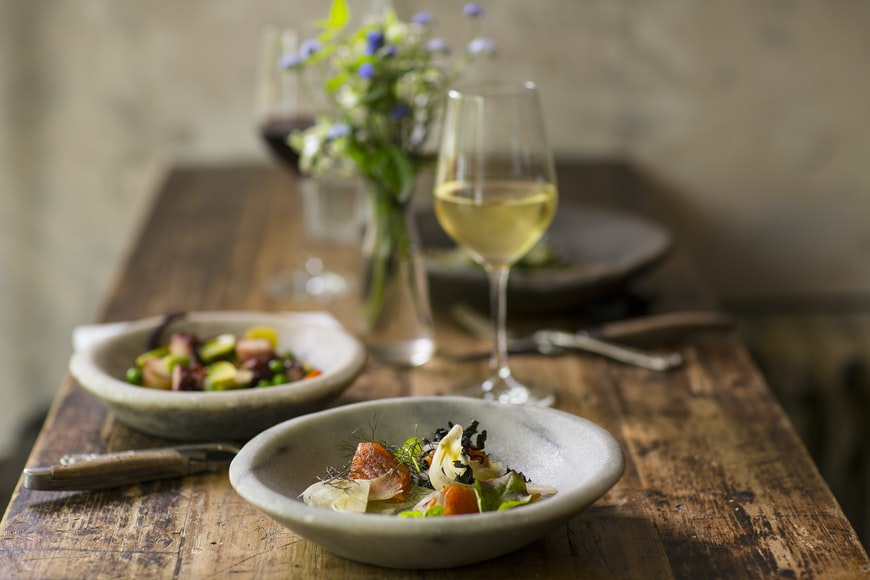Here are a few examples of excellent wine pairings with common dinner foods:
-Chardonnay and fish
As mentioned above, white wines pair best with light meats. Taking that strategy and getting even more specific, we can pair Chardonnay with most fish dishes for a delicious balance of flavors.
The best kind of fish to eat while pairing dinner with Chardonnay are fish with fats or rich, savory sauces, where the acidity in the wine will gently enhance the natural flavors. This food and beverage combination works especially well with fish like salmon or halibut.
-Pinot Noir and salad
For a healthy meal subtly enhanced with a lighter wine, try having a Pinot Noir with salad. This light-bodied wine makes for an excellent flavor combo with anything earthy, so this works best for salads that are more savory than tangy. Another great option for pairing Pinot Noir is mushrooms— on a salad or flatbread, or however else you like to eat them. The wine can intensify the savory elements without covering up the distinctive mushroom taste.
-Dry Rosé and cheesy pasta
Due to the many distinct flavors of cheese, cheesy dishes can be uniquely challenging to pair with wine. Luckily, a Dry Rosé should have the right mix of acidity to pair with almost any type of cheese used in a pasta dish. Dry Rosé has properties of both white and red wine, and it works well with a variety of cheeses. Dishes that use more than one type— such as lasagna, grilled cheese sandwiches, or ravioli— often compliment the unique flavor of the wine without throwing off the balance of the meal.


